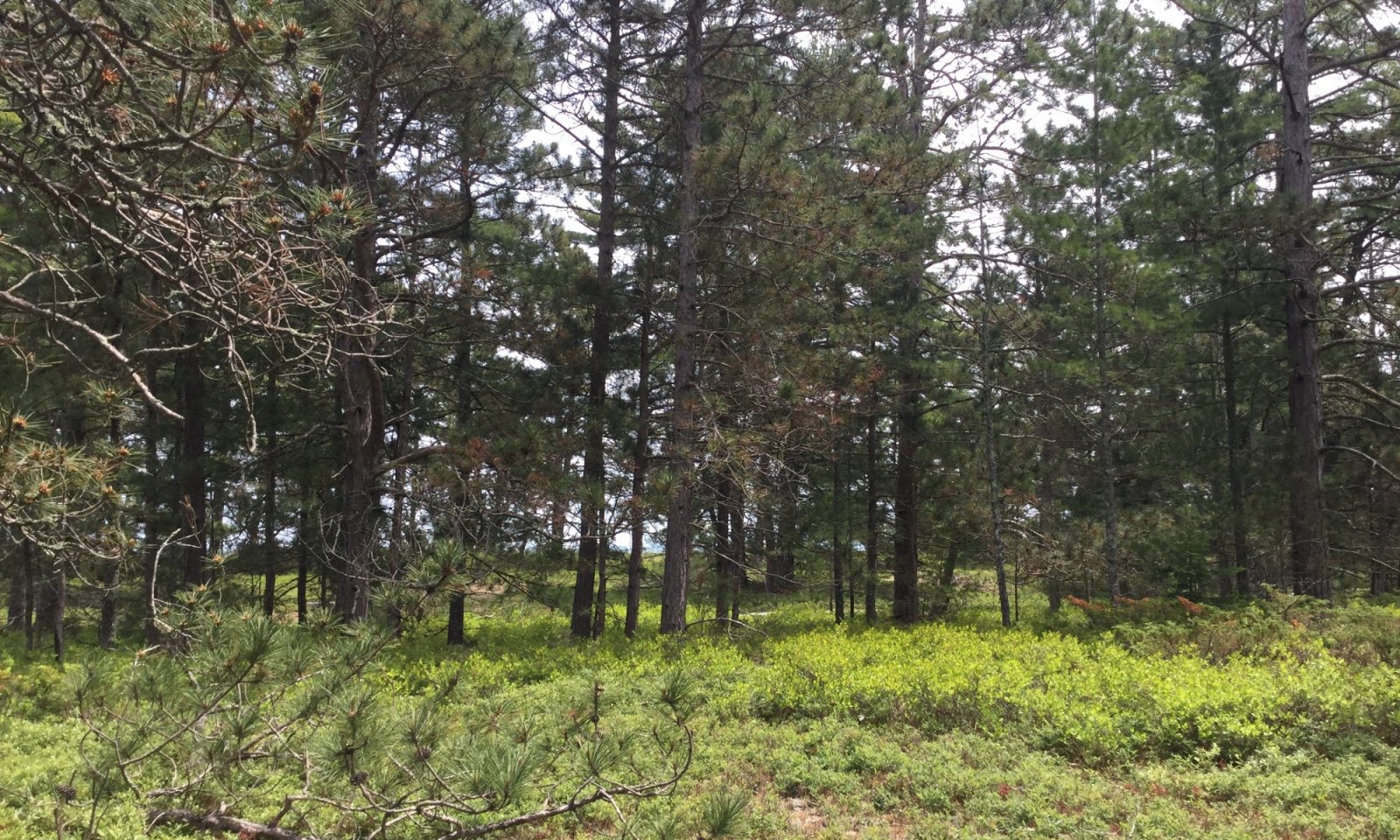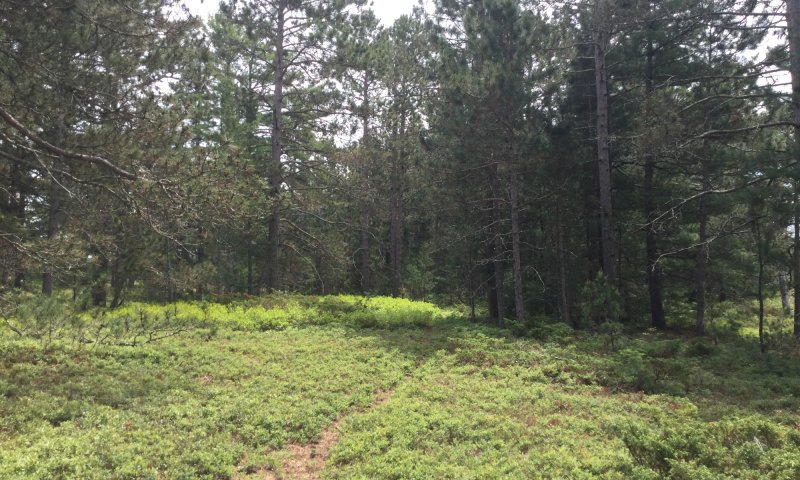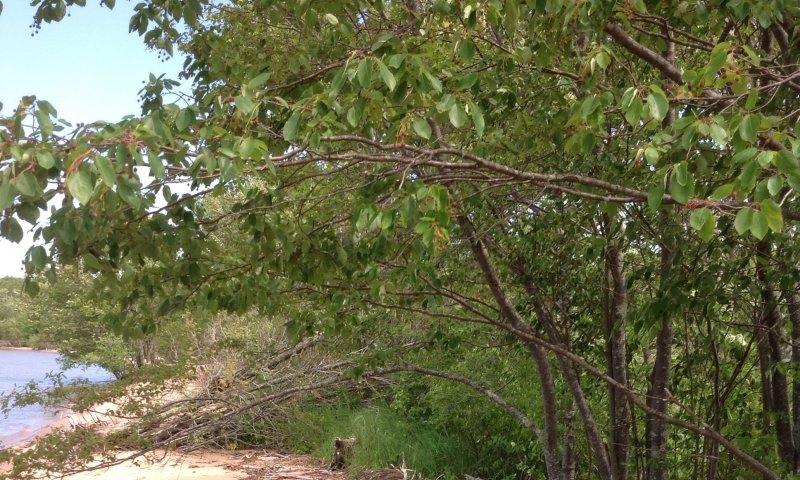

Natural Resources
Conservation Service
Ecological site R092XY001WI
Sandy Shore Complex
Last updated: 4/08/2020
Accessed: 12/18/2025
General information
Provisional. A provisional ecological site description has undergone quality control and quality assurance review. It contains a working state and transition model and enough information to identify the ecological site.
MLRA notes
Major Land Resource Area (MLRA): 092X–Superior Lake Plain
The Wisconsin portion of the Superior Lake Plain (MLRA 92) corresponds very closely to the Superior Coastal Plain Ecological Landscape published by Wisconsin Department of Natural Resources (WDNR 2015). The following brief overview of this MLRA is borrowed from that publication.
The Superior Coastal Plain is bordered on the north by Lake Superior and on the south by the Northwest Sands, Northwest Lowlands, and North Central Forest Ecological Landscapes. The total land area is approximately 1.2 million acres, which mostly consists of privately-owned forestland. The climate is strongly influenced by Lake Superior, resulting in cooler summers, warmer winters, and greater precipitation compared to more inland locations. The most extensive landform in this ecological landscape is a nearly level plain of lacustrine clays that slopes gently northward toward Lake Superior. The coastal plain is cut by deeply incised stream drainages and interrupted by the comparatively rugged Bayfield Peninsula.
During the Late Wisconsin glacial period, this area was covered with the advancing and retreating lobes of Superior and Chippewa. The landscape was rippled with moraines, but they were subdued by deposition of lacustrine materials. As the glaciers receded, glacial lakes riddled the landscape—most notably, Glacial Lake Duluth. The glacier receded eastward, exposing the western Lake Superior Basin. The ice covered the eastern basin, blocking the outlet of the lake, and continued to recede and contribute meltwaters that filled the glacial lake. The deep, red clays were deposited during this period of glacial lakes. The meltwaters from the glacier also contained sands which were deposited along the edge of the glacial lakes as beach deposits. Deep, narrow valleys have since been carved by rivers and streams flowing north into Lake Superior.
Historically, the Superior Coastal Plain was almost entirely forested. Various mixtures of eastern white pine (Pinus strobus), white spruce (Picea glauca), balsam fir (Abies balsamea), white birch (Betula papyrifera), balsam poplar (Populus balsamifera), quaking aspen (Populus tremuloides), and northern white-cedar (Thuja occidentalis) occurred on the fine-textured glacio-lacustrine deposits bordering much of the Lake Superior coast. Sandy soils, sometimes interlayered with clays, occur in some places. Such areas supported forests dominated by eastern white pine and red pine (Pinus resinosa). Eastern white pine was strongly dominant in some areas, according to mid-19th century notes left by surveyors of the federal General Land Office (Finley, R. 1976). Dry-mesic to wet-mesic northern hardwoods or hemlock-hardwood forests were prevalent on the glacial tills of the Bayfield Peninsula. Large peatlands occurred along the Lake Superior shoreline, associated with drowned river mouths.
Classification relationships
Habitat Types of N. Wisconsin (Kotar, 2002): This ES keys out to two habitat types: Acer rubrum – Abies balsamea / Vaccinium spp. – Cornus canadensis; Pinus strobus – Quercus spp. / Gaultheria procumbens [ArAbVCo or PQG]
Biophysical Setting (Landfire, 2014): This ES is mapped as Laurentian – Acadian Northern Pine – (Oak) Forest and Laurentian – Acadian Sub-boreal Mesic Balsam Fir-Spruce Forest. This ES is most similar to the Northern Pine-Oak Forest, but is not well represented by either classification.
WDNR Natural Communities (WDNR, 2015): This ES does not match any described communities based on its high variability.
USFS Subregions: Superior-Ashland Clay Plain Subsection (212Ya); May contain small areas of Ewen Dissected Lake Plain Subsection (212Jo), Winegar Moraines Subsection (212Jc), Gogebic-Penokee Iron Range Subsection (212Jb), and NorthShore Highlands Subsection (212Lb)*
Major Land Resource Area (MLRA): Superior Lake Plain (92)
Ecological site concept
Sandy Shore Complex has a small extent in MLRA 92. It occurs on active beach ridges, dunes, and plains along Lake Superior. The stability of the landform is influenced by weather events and wave action. The soils are somewhat poorly to excessively drained sands that formed in sand deposited by current, wave, or wind action. These sites vary in their location in a shore complex; sites can be higher up on a beach dune and therefore are less subject to wave action, or they can be located on wetter flats. Sources of water are primarily precipitation and waves from Lake Superior.
Plant communities clearly reflect the inherent instability of this Ecological Site. Most participating species possess some pioneering characteristics, they tolerate either very wet or very dry soil conditions and, above all, low soil nutrient availability. The most frequently present woody species include red maple (Acer rubrum), serviceberry, (Amelanchier spp.) and common juniper (Juniperus communis). In wetter locations speckled alder (Alnus incana), winterberry (Ilex verticillata) and red osier dogwood (Cornus sericea) are also common. Low shrub and herb layers typically include bear-berry (Arctostaphylos uva-ursi), blueberry (Vaccinium spp.), wild lily-of-the valley (Maianthemum canadense) and starflower (Trientalis borealis). Relative abundance of these species may vary greatly from phase to phase, and depending on location. It also is not uncommon for a species with relatively low frequency of presence for the Ecological Site (constancy) to have high abundance in any given community. Temporal abundance of any plant species is influenced by many dynamic environmental and ecological factors.
These sites are distinct from all other ecological sites based on the direct wave action and influence of Lake Superior.
Table 1. Dominant plant species
| Tree |
(1) Acer rubrum |
|---|---|
| Shrub |
(1) Amelanchier |
| Herbaceous |
Not specified |
Click on box and path labels to scroll to the respective text.
Ecosystem states
State 1 submodel, plant communities
| 1.1A | - | High wave action removes and redeposits relatively thin layers of sand |
|---|---|---|
| 1.1B | - | Major wave and ice action disrupts or eliminates existing plant communities |
| 1.2A | - | Relatively long period without major beach disturbance |
| 1.2B | - | Major wave and ice action disrupts or eliminates existing plant communities |
| 1.3A | - | A prolonged period (years) without major wave disturbance of plant communities |
| 1.3B | - | A period of years of rising water levels. |
| 1.4A | - | A period of years of dropping water levels. |


